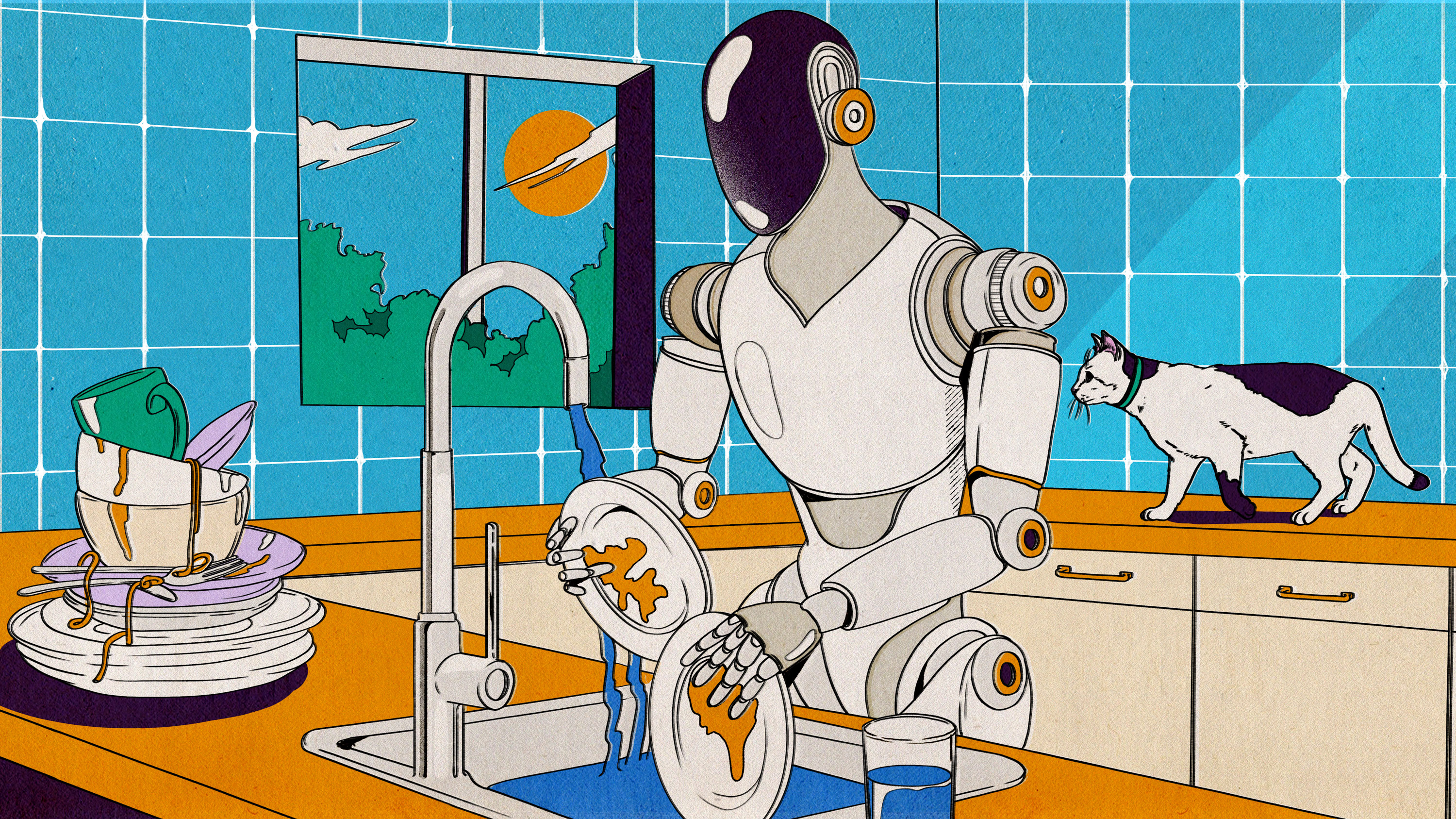Fast-learning robots: 10 Breakthrough Technologies 2025
AI advances are rapidly speeding up the process of training robots, and helping them do new tasks almost instantly.

WHO
Agility, Amazon, Covariant, Robust, Toyota Research Institute
WHEN
Now
Generative AI is causing a paradigm shift in how robots are trained. It’s now clear how we might finally build the sort of truly capable robots that have for decades remained the stuff of science fiction.
Robotics researchers are no strangers to artificial intelligence—it has for years helped robots detect objects in their path, for example. But a few years ago, roboticists began marveling at the progress being made in large language models. Makers of those models could feed them massive amounts of text—books, poems, manuals—and then fine-tune them to generate text based on prompts.
Explore the full 2025 list of 10 Breakthrough Technologies.
The idea of doing the same for robotics was tantalizing—but incredibly complicated. It’s one thing to use AI to create sentences on a screen, but another thing entirely to use it to coach a physical robot in how to move about and do useful things.
Now, roboticists have made major breakthroughs in that pursuit. One was figuring out how to combine different sorts of data and then make it all useful and legible to a robot. Take washing dishes as an example. You can collect data from someone washing dishes while wearing sensors. Then you can combine that with teleoperation data from a human doing the same task with robotic arms. On top of all that, you can also scrape the internet for images and videos of people doing dishes.
By merging these data sources properly into a new AI model, it’s possible to train a robot that, though not perfect, has a massive head start over those trained with more manual methods. Seeing so many ways that a single task can be done makes it easier for AI models to improvise, and to surmise what a robot’s next move should be in the real world.
It’s a breakthrough that’s set to redefine how robots learn. Robots that work in commercial spaces like warehouses are already using such advanced training methods, and the lessons we learn from those experiments could lay the groundwork for smart robots that help out at home.
Deep Dive
Artificial intelligence
AI means the end of internet search as we’ve known it
Despite fewer clicks, copyright fights, and sometimes iffy answers, AI could unlock new ways to summon all the world’s knowledge.
How a top Chinese AI model overcame US sanctions
With a new reasoning model that matches the performance of ChatGPT o1, DeepSeek managed to turn restrictions into innovation.
The second wave of AI coding is here
A string of startups are racing to build models that can produce better and better software. They claim it’s the shortest path to AGI.
What’s next for AI in 2025
You already know that agents and small language models are the next big things. Here are five other hot trends you should watch out for this year.
Stay connected
Get the latest updates from
MIT Technology Review
Discover special offers, top stories, upcoming events, and more.